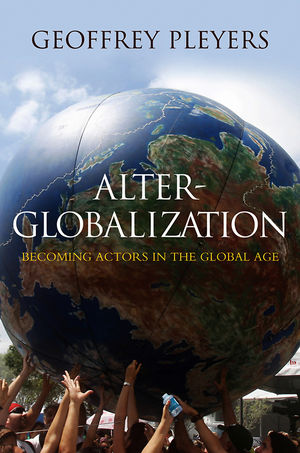Alter-Globalization: Becoming Actors in a Global AgeISBN: 978-0-7456-4676-3
Paperback
272 pages
January 2011, Polity
 This is a Print-on-Demand title. It will be printed specifically to fill your order. Please allow an additional 10-15 days delivery time. The book is not returnable.
Other Available Formats: Hardcover
|
||||||
Foreword by Alain Touraine xi
Acknowledgements xvii
Part 1 Alter-Globalization – Becoming Actors in the Global Age 1
Introduction 3
From the first uprisings to the global crisis 7
A global movement 10
1 The Will to Become an Actor 16
An actor against neoliberal ideology 16
Social agency in the global age 23
Part 2 The Way of Subjectivity 33
2 The Experience of Another World 35
Resisting through subjectivity 35
Spaces of experience 37
Diversions of experience 54
3 From the Mountains of Chiapas to Urban Neighbourhoods 58
The Zapatistas 58
Barricade social and cultural centre 68
Alter-activist youth 73
From the Zapatistas to alter-activists 88
4 Expressive Movements and Anti-Power 90
A concept of social change 90
A social and subjective engagement 95
Illusions of anti-power and diversions of spaces of experience 96
Facing the political 100
Conclusion 104
Part 3 The Way of Reason 107
5 Expertise for Another World 109
Resisting through reason 109
Spaces of expertise 112
The ambivalence of expertise 123
Conclusion 128
6 Citizens, Experts and Intellectuals 130
Introduction 130
A citizen movement 131
Committed intellectuals 135
Theories of another world and practices of expertise 142
Conclusion 152
7 Reason, Democracy and Counter-Power 154
A movement against neoliberal ideology 154
Rationality at stake 157
Democracy at stake 163
A concept of social change 169
Conclusion 177
Part 4 Confl uence of the Two Paths 179
8 Tensions and Collaborations 181
Common problematics 181
Dichotomization: from tension to opposition 185
Absorption: tension erased by hegemony 191
Combination: tensions and complementarities 193
Conclusion 200
9 The Main Debates 201
Think local and global, act local and global 202
The movement-internal organization 210
Rethinking social change 216
Conclusion 226
10 Towards a Post-Washington Consensus Alter-Globalization 228
Reconfi gurations 228
Towards concrete outcomes 237
Climate justice 251
Conclusion 256
Conclusion 258
Notes 264
Bibliography 280
Index 302



